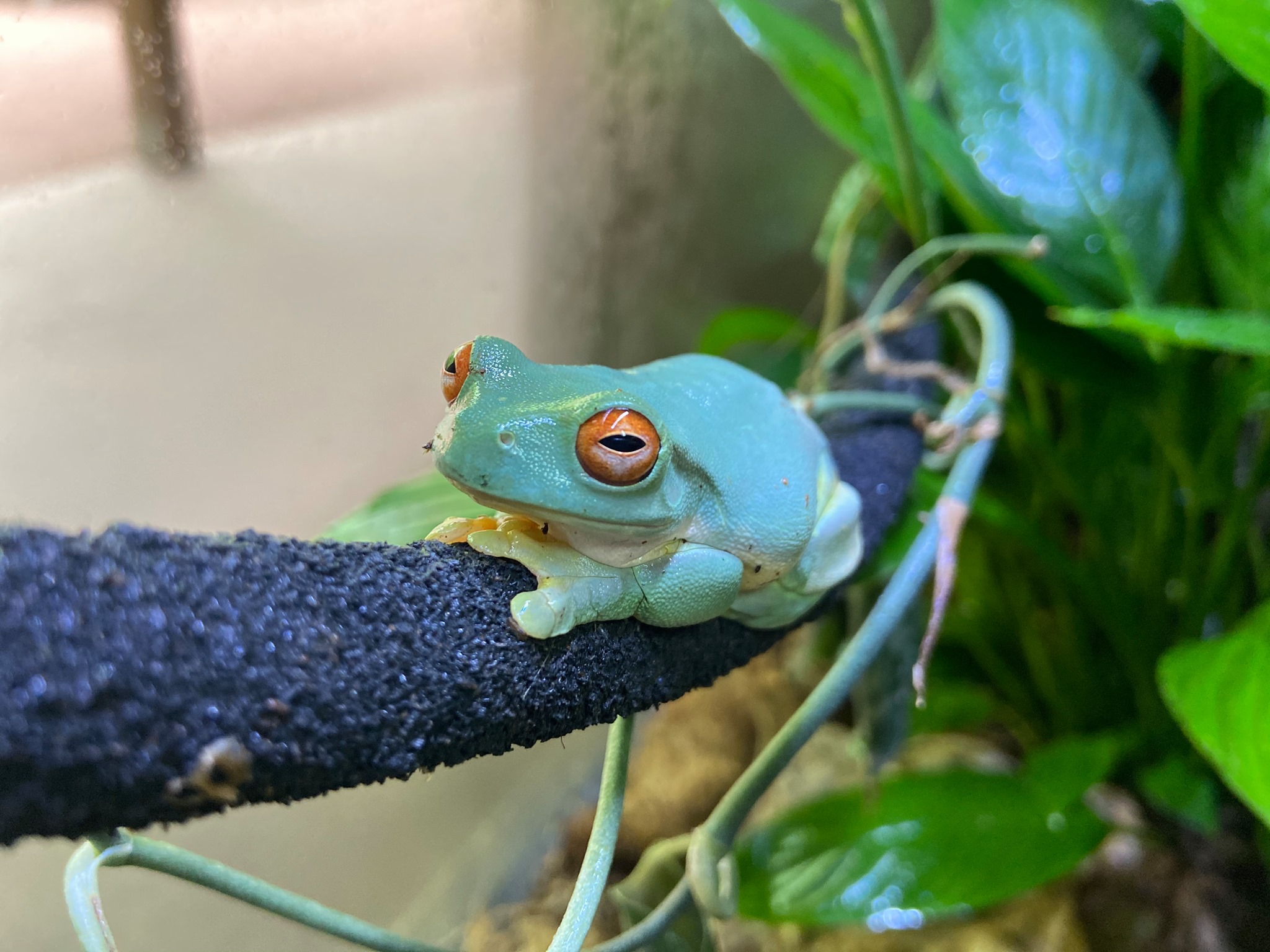I LIVE IN AUSTRALIA
The orange-eyed tree frog is native to rainforests along the eastern coast of Australia, and they spend much of their time high up in the trees, as their name suggests.
I AM AN INSECTIVORE
Like many other frog species, orange-eyed tree frogs are insectivorous and the majority of their diet consists of crickets, moths, and flies.
ORANGE-EYED TREE FROGS ARE SOCIAL
The orange-eyed tree frog is a solitary amphibian and only shares space with other frogs during mating season.
ON THE DEFENSE
Orange-eyed tree frogs use a defense mechanism called “startle coloration.” Startle coloration refers to bright coloration on an animal’s body that can be used to startle or frighten predators. An orange-eyed tree frog’s eyes can be used for this purpose. Additionally, when this frog closes its eyes, they are able to camouflaged themselves very well with their surroundings.
HELPING THE ORANGE-EYED TREE FROG IN THE WILD
The Fort Wayne Children’s Zoo supports Greening Australia, a conservation organization that works towards providing healthy, productive landscapes where people and nature thrive.
I AM IMPORTANT TO MY ECOSYSTEM
As an insectivore, orange-eyed tree frogs help keep the Australian insect populations under control. They are also a food source for other large predators in their ecosystem.

